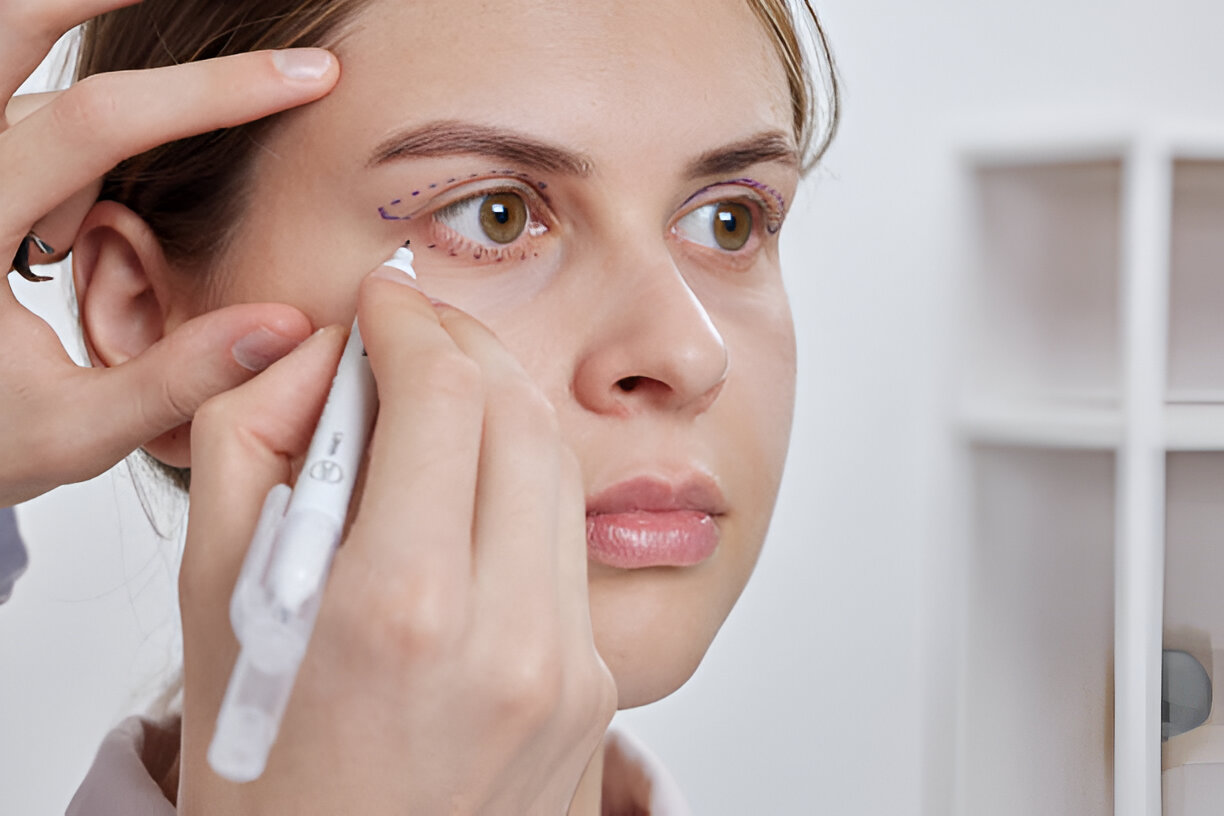Blefaroplastia: Antes y Después del Procedimiento

A medida que envejeces, la piel de tus párpados puede acumular arrugas día tras día; la gravedad hace que los tejidos se caigan, dándote un aspecto más envejecido. Si estás considerando una cirugía para eliminar el exceso de piel en tus ojos y tensar la piel en esta área del rostro un procedimiento de blefaroplastia es justo lo que buscas. Te explicaremos cada paso de este procedimiento para que estés bien informado y preparado.
Todo lo que debes saber sobre la blefaroplastia
La blefaroplastia es una cirugía estética que elimina el exceso de piel de los párpados. Con el paso del tiempo, la piel en los párpados tiende a estirarse, y los músculos que la sostienen pueden debilitarse. Como resultado, se puede acumular grasa alrededor de los ojos, lo que provoca bolsas debajo de los ojos y una caída de las cejas, alterando su forma natural y dando un aspecto de cansancio o envejecimiento.
Además del impacto estético, la piel flácida sobre y debajo de los ojos puede afectar tu visión periférica, especialmente en las zonas superiores y exteriores del campo visual. Esta obstrucción puede dificultar actividades cotidianas como leer, conducir o incluso caminar con seguridad. Someterse a una blefaroplastia no solo te ayuda a recuperar una apariencia más juvenil, sino que también puede mejorar significativamente tu visión, al eliminar el exceso de piel que bloquea la vista. Es una solución tanto estética como funcional.
¿Cómo saber si eres un buen candidato para una blefaroplastia?
La edad ideal para que los pacientes califiquen para una blefaroplastia comienza a partir de los cuarenta años. Sin embargo, si cumples con alguno de los siguientes criterios, podrías ser candidato(a) para una blefaroplastia:
- Enfermedades oculares: Glaucoma, ojos secos o desprendimiento de retina.
- Trastornos de la tiroides: Enfermedad de Graves, Hashimoto, hipotiroidismo o hipertiroidismo.
- Enfermedad cardiovascular: Presión arterial alta u otros trastornos circulatorios.
- Diabetes.
¿Qué sucede durante un procedimiento de blefaroplastia?
Dependiendo de tu diagnóstico previo por un médico de confianza, esta cirugía puede involucrar los párpados superiores, los párpados inferiores o ambos.
Blefaroplastia Superior
Durante una blefaroplastia superior, el cirujano hará una incisión en el pliegue natural del párpado superior. Estos pequeños cortes no serán visibles cuando abras los ojos. Después de realizar la incisión, se eliminará el exceso de piel y grasa del interior de los párpados, y luego la incisión se cerrará con puntos de sutura.
Blefaroplastia Inferior
En cambio, en una blefaroplastia inferior, el cirujano realizará la incisión por debajo de la línea de las pestañas inferiores. Una vez hecha la incisión, también llevará a cabo el proceso de remover el exceso de piel en la zona del párpado inferior. El cirujano también puede usar una técnica para corregir cualquier problema en esta área y redistribuir el exceso de grasa.
Cuidados Postoperatorios para la Blefaroplastia
Después de la cirugía, tu rostro puede presentar hinchazón y moretones; esta es una reacción normal durante los primeros 7 días después de la blefaroplastia. Para controlar esta respuesta de tu cuerpo, se recomienda aplicar cuidadosamente compresas de hielo o frías, sin causar daño en las incisiones de la cirugía. Los profesionales también recomiendan mantener la cabeza elevada para evitar más hinchazón y disminuir el flujo sanguíneo, además de tomar medicamentos para el dolor.
Después de que la hinchazón inicial comience a disminuir, el siguiente paso es la extracción de los puntos de sutura. Este delicado procedimiento indica que la piel está sanando a tiempo; sin embargo, es importante recordar que no se debe volver a la rutina normal demasiado rápido, ya que los pacientes de blefaroplastia necesitan descanso para evitar tensión en los tejidos que están sanando.
¿Duran los resultados de la blefaroplastia?
Normalmente, los resultados después de una cirugía de blefaroplastia duran más de 4 años, esto aplica tanto para cirugías de párpados superiores como inferiores. Rara vez necesitan retoques después del primer procedimiento. Es importante saber que este procedimiento no altera la estructura facial ni tus rasgos naturales, solo le dará a tus ojos un aspecto fresco y más joven, además de ayudarte a evitar problemas de visión.
Si ya has decidido definitivamente hacerte una blefaroplastia, Riviera Medical Center es el lugar ideal para ti. Contáctanos y dale a tus ojos un nuevo look!
